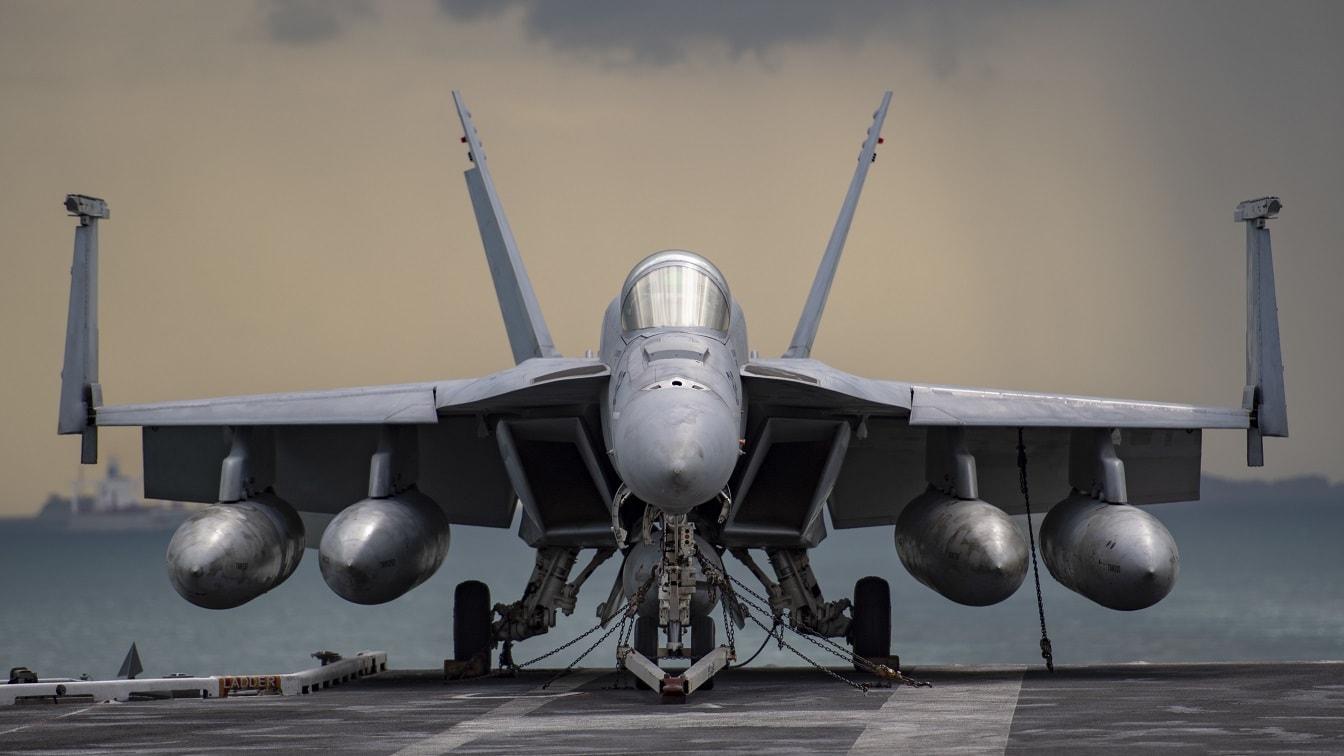In late February, Boeing Aerospace confirmed that production of the new-build F/A-18 Super Hornet fighter jet would end by late 2025. The manufacturer’s Vice President noted that as the U.S. “invests in and develops the next era of capability, we are applying the same innovation and expertise that made the F/A-18 a workhorse for the U.S. Navy and air forces worldwide for nearly 40 years,” in his remarks.
Although the development of a sixth-generation fighter and the maintenance of the F-35 Lightning II fighter program is likely the service’s top priorities, the Super Hornet should remain in the skies for decades to come.
A brief history of the Hornet family of airframes
The twin-engine, carrier-capable, multirole F/A-18 Super Hornet is a derivative of the McDonnell Douglas F/A-18 Hornet series of fighters. In the 1970s, the F/A/-18 variant was conceptualized based on Northrop Grumman’s YF-17 platform for both the Navy and Marine Corps.
Designed to replace the Douglas A-4 Skyhawk and the remaining McDonnell Douglass F-4 Phantom IIs, the Naval Fighter-Attack, Experimental (VFAX) program advocated for a relatively inexpensive fighter to complement the F-14 Tomcat. T
he winner of this program was the YF-16, however, the Navy decided that the alternate Y-17 prototype would serve as its new lightweight fighter. Shortly after selection the service then requested that McDonnell Douglas and Northrop create a new airframe based on the YF-17, but with designs that would make it more carrier-friendly.
As detailed by Air Force Magazine, “The F-17 then evolved into the F/A-18A, the F/A designation coined by the McDonnell Douglas/Northrop team to suggest a multirole fighter/attack aircraft. Though it looked much like the YF-17 from a distance, the new jet was beefier, with bigger engines, a bigger nose, a fatter LEX, sawtooth wing leading edges, different intake geometry, heavier landing gear, and of course, an arresting hook system.”
From Hornet to Super Hornet
The Hornet’s effective role during the 1986 bombing of Libya and the subsequent 1991 Gulf War indicated that the platform would remain a staple in the U.S. military’s aerial strategy. By 1992, however, the Navy understood that the platform would need to undergo some major enhancements to keep it a formidable player in the skies.
The first two blocks of the newly improved upon Super Hornets gave the fighter roughly 33 percent more internal fuel storage and 15,000 more pounds in maximum weight, allowing for more than a 40 percent increase in operational range.
According to Sandboxx News, the new Super Hornets feature advanced cockpit additions, including a touchscreen display, an Engine Fuel Display, and a Reference Standby Display. “Other avionics tucked inside the fuselage were upgraded, including onboard radar (the Super Hornet was equipped with a APG-79 radar system that could keep track of more enemy aircraft and spot them from much further distances).”
The Block III Super Hornet has already become a legendary airframe
In 2020, Boeing received a $4 billion contract with the U.S. Navy to produce 78 Block III Super Hornet fighters, which should all enter service by late 2024. The new variant is comprised of an even more advanced cockpit than its Block II predecessor and an adjusted processor that enables the airframe to do more work in less time.
Perhaps the most significant addition to the Block III fighters is the set of conformal fuel tanks that add approximately 3,500 pounds of fuel. Neither the Block III’s predecessors nor the F-35C fifth-generation fighter has the range needed to strike Chinese targets from a safe distance, making this ability highly paramount to the U.S. military as a whole.
Arguably the cherry on top for the Block III Super Hornet is that it uses Distributed Targeting Processor-Networked mission computers and a Tactical Targeting Network Technology data link- which will allow future changes to upgrades to its software to be made seamlessly.
While production of the new F/A/-18 Super Hornet will no longer be occur after 2025, the fighter’s role in future combat should not be dismissed. The Block III model’s adaptability and longer-range capabilities will make the fighter a staple in the U.S. Navy for years to come.
Expert Biography
Maya Carlin is a Senior Editor with 19FortyFive. She is also an analyst with the Center for Security Policy and a former Anna Sobol Levy Fellow at IDC Herzliya in Israel. She has by-lines in many publications, including The National Interest, Jerusalem Post, and Times of Israel.
From 19FortyFive
Ukraine Footage Shows U.S. M982 ‘Excalibur’ Cut Through Russian Artillery
How To Sink A $3 Billion Dollar Submarine: Leave A Hatch Open
Smashed To Pieces: Video Shows Ukraine Hitting Russian Air Defenses

